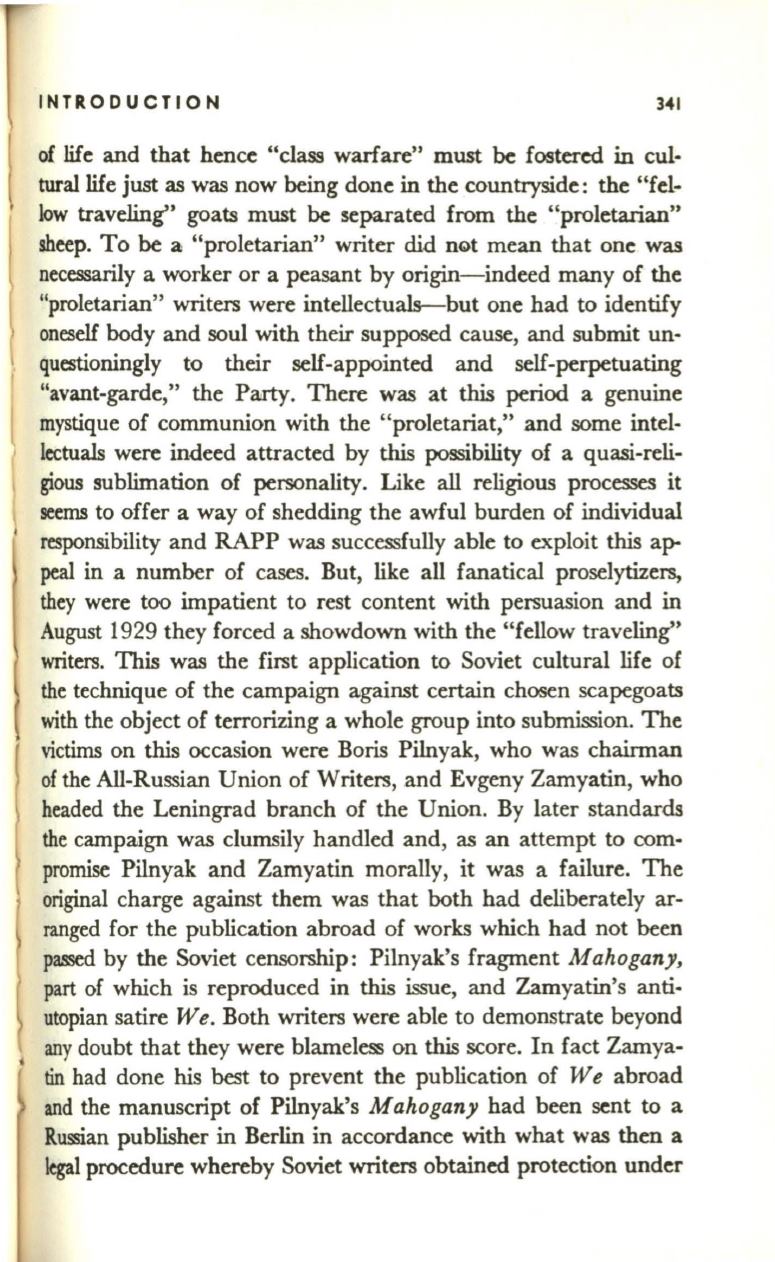
INTRODUCTION
341
of life and that hence "class warfare" must be fostered in cui–
turallife just as was now being done in the countryside: the "fel–
low
traveling" goats must be separated from the "proletarian"
sheep. To be a "proletarian" writer did nQt mean that one was
necessarily a worker or a peasant by origin-indeed many of the
"proletarian" writers were intellectuals--but one had to identify
oneself body and soul with their supposed cause, and submit un–
questioningly to their self-appointed and self-perpetuating
"avant-garde," the Party. There was at
this
period a genuine
mystique of communion with the "proletariat," and some intel–
lectuals were indeed attracted by
this
possibility of a quasi-reli–
gious sublimation of personality. Like
all
religious processes it
seems
to offer a way of shedding the awful burden of individual
I
responsibility and RAPP was successfully able to exploit
this
ap–
peal
in a number of cases. But, like all fanatical proselytizers,
they were too impatient to rest content with persuasion and in
August 1929 they forced a showdown with the "fellow traveling"
writers. This was the first application to Soviet cultural life of
the technique of the campaign against certain chosen scapegoats
with
the object of terrorizing a whole group into submission. The
victims on this occasion were Boris Pilnyak, who was chairman
of the All-Russian Union of Writers, .and Evgeny Zamyatin, who
headed the Leningrad branch of the Union. By later standards
the campaign was clumsily handled and, as an attempt to com–
promise Pilnyak and Zamyatin morally, it was a failure. The
original charge against them was that both had deliberately ar–
ranged for the publication abroad of works which had not been
passed by the Soviet censorship: Pilnyak's fragment
Mahogany,
part of which is reproduced in this issue, and Zamyatin's anti–
utopian satire
We.
Both writers were able to demonstrate beyond
any doubt that they were blameless on
this
score. In fact Zamya–
tin
had done
his
best
to prevent the publication of
We
abroad
and the manuscript of Pilnyak's
Mahogany
had been sent to a
Ruman publisher
in
Berlin in accordance with what was then a
legal procedure whereby Soviet writers obtained protection under


